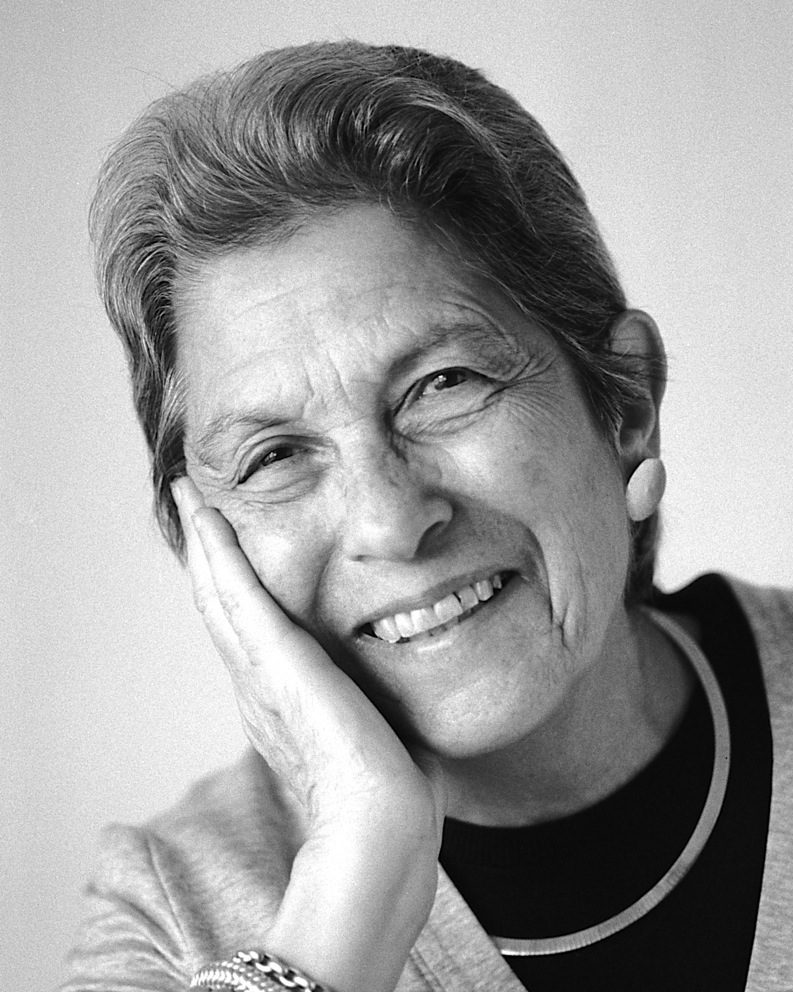Details
Article
Reflections is a column by Humanity in Action Founder and Executive Director Emeritus Judy Goldstein. In each column, Judy shares her personal insights and opinions about a variety of topics and Humanity in Action’s work.
It rained endlessly in Maine for the past few weeks. When the fire danger was high before the wet onslaught, people looked at the dry earth (and struggling gardens in bud) with apprehension and yearned for sun and warmth as summer is supposed to be. Now, the vegetation is lush and the days are warm—thankfully not at all like states in the American Southwest, Canada, and in so many other places in Europe, Asia, Africa and the Middle East.
We are told that we must learn how to live between extremes without succumbing to fears of extremes. Questions loom large given the many man-induced challenges we are facing. I have been doing lots of eclectic reading (maybe to escape)—bouncing off ideas and perspectives. They include Ivan Turgenev’s Fathers and Sons, Kay Redfield Jamison’s The Unquiet Mind, Chad L. Williams’ The Wounded World: W.E.B. Du Bois and the First World War, Timothy Egan’s A Fever in the Heartland: the Ku Klux Klan’s Plot to Take Over America, and the Woman who Stopped Them, Daniel Mendelsohn’s The Lost: A Search for Six of Six Million, Ira Katznelson’s When Affirmative Action Was White: An Untold History of Racial Inequality in Twentieth-Century America, and Andrzej Szczypiorski’s The Beautiful Mrs. Seidenman. For fun, a dip into Dorothy Sayers mysteries!
I have been immersed, as well, in many fascinating articles, including one, “Everyone Likes Reading. Why Are We So Afraid of It?,” by A.O. Scott in the New York Times, and “Chaos Theory: How a Disaster Expert Prepares for the Worst,” by Sam Knight in the New Yorker. I am not sure what they add up to, but each informs the tension of not knowing what to think, where we find ourselves on the human scale of folly and hope, how to fight against simply withdrawing from multiple fields of uncertainty.
One can start with a grand summation from A.O. Scott, who blasted out his worries about our culture and its diminished pursuit of reading: “A quintessentially human activity is being outsourced to machines that don’t care about phonics or politics or beauty or truth. A precious domain of imaginative and intellectual freedom is menaced by crude authoritarian politics. Exposure to the wrong words is corrupting our children, who aren’t even learning how to decipher the right ones. Our attention spans have been chopped up and commodified, sold off piecemeal to platforms and algorithms. We’re too busy, too lazy, too preoccupied to lose ourselves in books.”

For Scott, the problems go even deeper, to the means of gaining knowledge. There is, Scott writes, “a deep ambivalence about reading itself, a crack in the foundations of modern consciousness.” The “crack” is penetrating and lethal but in some ways not surprising. “Is any other common human undertaking so riddled with contradiction?” he asks. Contradictions so essential to human needs. “Reading is supposed to teach us who we are and help us forget ourselves, to enchant and disenchant, to make us more worldly, more introspective, more empathetic and more intelligent. It’s a private, even intimate act, swathed in silence and solitude, and at the same time a social undertaking. It’s democratic and elitist, soothing and challenging, something we do for its own sake and as a means to various cultural, material and moral ends.”
No ambivalence or contradictions for me about reading! It is necessary for thinking, remembering and imagining—a way to gain greater understanding of past and present especially as our present is filled with uncertainties that compound day by day. I am trained as an historian; the past is familiar ground. But, it too is such complex ground as our cultures rework the historic canon and probe deeply into personal narratives—especially traumatic narratives that involve destructive family histories as well as religious, racial and gender identities.
In The Unquiet Mind, Jamison, a well-respected doctor and author, extols the power of interactive therapeutic means that uncover traumatic personal and collective memories. The book is part memoir, part advocacy. Her strongest chapters focus on the massive psychic and physical destruction of World War I as well as the horrific discrimination experienced by the singer Paul Robeson.
Jamison extols the courageous, innovative doctors and artists (mainly patients of the doctors) who sought in desperation to absorb brutal combat memories of the First World War. The massive wartime injuries to body and psyche induced psychiatrists and other doctors, as part of their national responsibility, to adapt new forms of healing after a lethal past. The memories were a newly conceived form of healing by the doctors. Repression was anathema and dangerous. Memories were to be both controllable and liberating. Sharing the pain of war itself and the loss of those who were wounded or dead would lead to “the far more bearable emotion of grief.” Moreover, “It was the uses of memory—what best to remember and reconstrue, what best to forget—that engaged the imagination of many of the war poets and doctors…To write about the war to shape its terror and futility into something that could be grasped and its memory, to a point, controlled.” (p. 101, 6)
In this American moment of uncertainty, what, we might ask, is a “controlled” historic narrative? The question clearly doesn’t relate to military combat, as in the aftermath of the First World War, but to the current inflamed cultural and political wars. The challenges come from the need to revisit the past—a past frequently cast in iron clad assumptions no longer valid—about what to remember and what to ignore. Timothy Egan’s study of the KKK in the 1920s examines one aspect of America’s long term wars of discrimination and violence. The history of the rise and fall of the Klan in the 1920s—a study in political violence and corruption—was one which American history has basically ignored and repressed. The history of the KKK has been curated to play down its significance and thereby ignore the underlying and continuing power of white power and supremacy.
A Fever in the Heartland: The Ku Klux Klan’s Plot to Take Over America, and the Woman who Stopped Them is a gripping drama of greed, political power and sexual violence—the work of one man who owned the state of Indiana for several years. The Klan message spread like a fire in the aftermath of the First World War. Hatred of Blacks, immigrants, Catholics and Jews infiltrated churches, shaped public rituals and converted government offices and fraternal organizations to Klan beliefs. The prejudices and practices were hardly new but violence and corruption converted or intimidated large parts of the population to the Klan way of life. The ideology was clear: racial superiority, supported by pseudo-scientific eugenic beliefs, justified and enabled the rule of white violence for generations. Its power was broken in the wake of the rapacious behavior of the Grand Dragon of the Indiana Klan, D.C. Stephenson, who raped and caused the death of an Indiana woman. Her deathbed testimony convinced a jury to convict and send Stephenson to jail for many years.
The Indiana Klan never recovered its base of power but so many of its pernicious and undemocratic ideas and weapons of intimidation went underground. Despite the wide reach of the Klan in the ‘20s, emblematic of America’s national trauma of racist rule, America fabricated a sanitized national narrative and placed the Klan safely in the past. Black and white photos of marches, cross burnings and lynchings—including the 1924 Klan march in Washington, D.C. with 50,000 people in the parade itself and 200,000 supporting them on the sidelines—barely convey the Klan in power. Placed somewhere in the gray past, we know today that the Klan’s racist beliefs and recourse to violence, directed against Blacks and Jews, have continued to deplete America’s democratic experiment. While the Klan lost out its importance on the ground, its beliefs remained powerful. After Congress passed an omnibus bill of racist restrictions in the 1920s, only white Christian immigrants could gain entry to America.
A decade after the Klan’s ascent, the New Deal created what historian Ira Katznelson calls the edifice for affirmative action for whites: “New national policies enacted in the pre-civil rights, last-grasp era of Jim Crow constituted a massive transfer of quite specific privileges to white Americans. New programs produced economic and social opportunity for favored constituencies and thus widened the gap between white and black Americans in the aftermath of the Second World War.” (p. 23)
Thus, the hard work continues. Restorative justice—an inclusive collective endeavor—must engage in restorative history as exemplified by Professor Carol Anderson’s work. In her many scholarly writings and in the film “I, Too,” she retrieves histories that have been hidden and distorted. Opposing the rewriting of history, as currently promulgated in Florida, is a new democratic necessity. Protecting libraries across the country that provide books on changing racial and gender assumptions is an obligation. In the ‘20s, political powers fought over immigration, then as now cast in terms of pseudo-racial categories. Jim Crow was embedded in the South; prejudice against Blacks, Jews, Catholics and Indigenous Peoples was endemic throughout the country. We have moved ahead due to visionaries, leaders and a public that imagined and worked for a more equitable society. Moral responsibility, justice, and healing from historic injuries continue to test the American system. For all of us, there is much to read and much to do.


